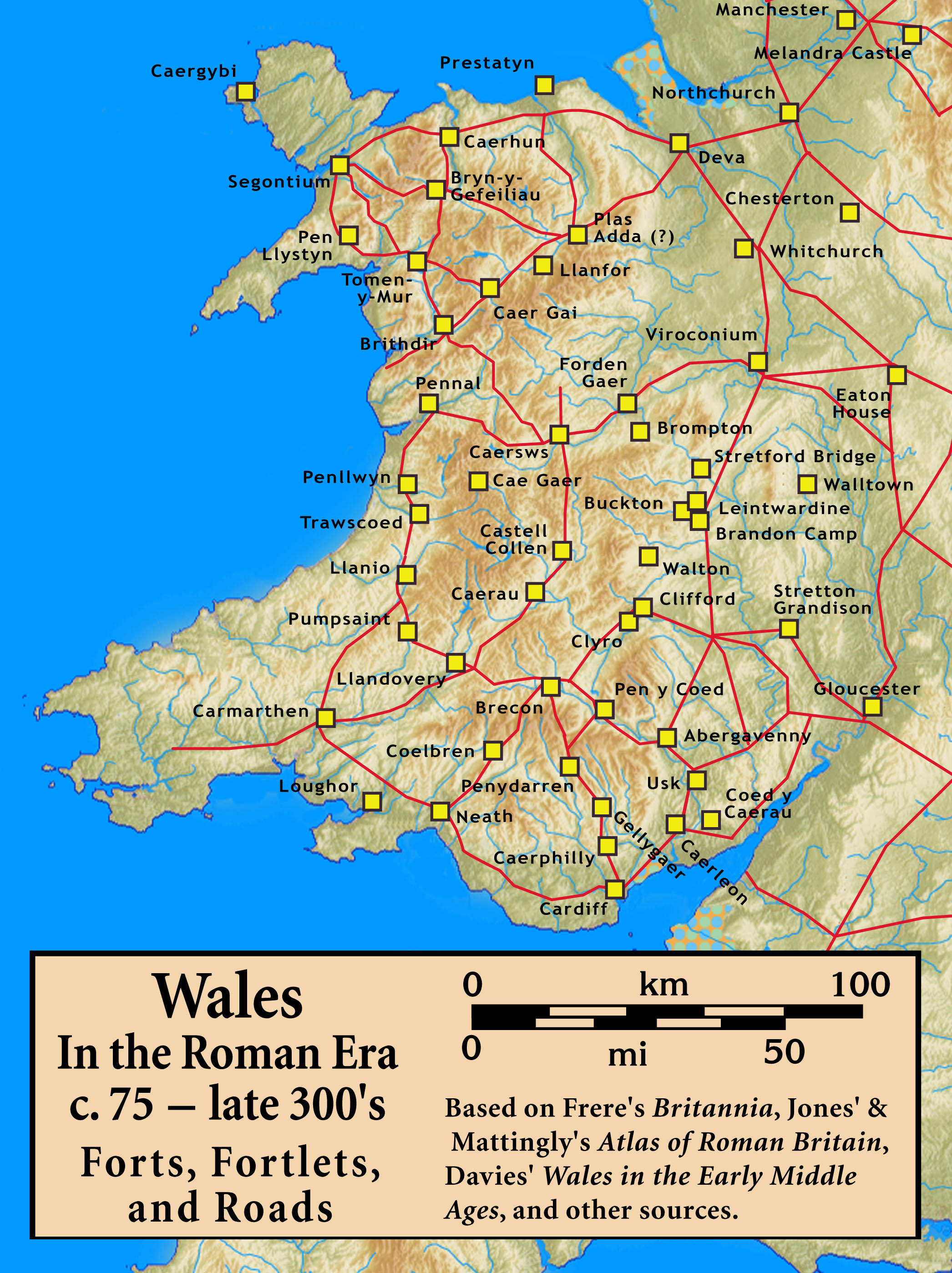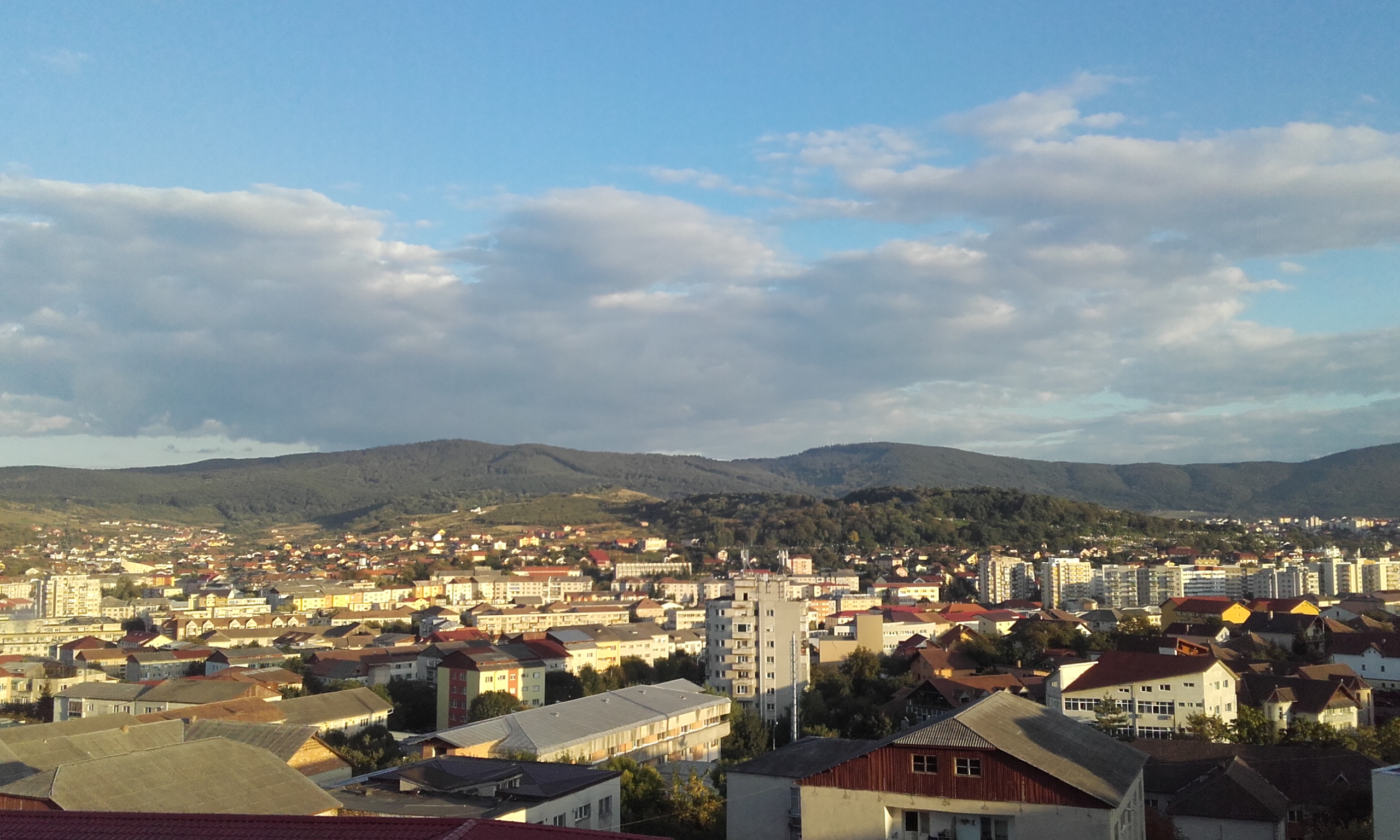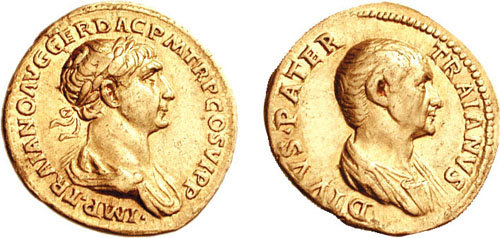|
Castra Of Jac
The Castra of Jac was a fort made of earth in the Roman province of Dacia. It was erected in the 2nd century AD. Not far from the fort, the remains of a previous fortification (built in the 1st century BC) and of a Roman watchtower were unearthed. The fort and the watchtower were abandoned in the 3rd century. Traces of the ''castra'' can be identified on Citera Hill in Jac (commune Creaca, Romania). The fort was manned by a Palmyran numerus with a detachment of horse-archers. See also *List of castra Castra (Latin, singular castrum) were military forts of various sizes used by the Roman army throughout the Empire in Europe, Asia and Africa. The largest castra were permanent legionary fortresses. Locations The disposition of the castra refl ... * Limes Porolissensis Notes External linksRoman castra from Romania - Google MapsEarth Roman auxiliary forts in Romania History of Crișana Historic monuments in Sălaj County Limes Porolissensis {{Dacia-st ... [...More Info...] [...Related Items...] OR: [Wikipedia] [Google] [Baidu] |
Dacians
The Dacians (; ; ) were the ancient Indo-European inhabitants of the cultural region of Dacia, located in the area near the Carpathian Mountains and west of the Black Sea. They are often considered a subgroup of the Thracians. This area includes mainly the present-day countries of Romania and Moldova, as well as parts of Ukraine, Moravian Banovina, Eastern Serbia, Northern Bulgaria, Slovakia, Hungary and Southern Poland. The Dacians and the related Getae spoke the Dacian language, which has a debated relationship with the neighbouring Thracian language and may be a subgroup of it. Dacians were somewhat culturally influenced by the neighbouring Scythians and by the Celtic invasion of the Balkans, Celtic invaders of the 4th century BC. Name and etymology Name The Dacians were known as ''Geta'' (plural ''Getae'') in Ancient Greek writings, and as ''Dacus'' (plural ''Daci'') or ''Getae'' in Roman Empire, Roman documents, but also as ''Dagae'' and ''Gaete'' as depicted on ... [...More Info...] [...Related Items...] OR: [Wikipedia] [Google] [Baidu] |
Castra
''Castra'' () is a Latin language, Latin term used during the Roman Republic and Roman Empire for a military 'camp', and ''castrum'' () for a 'Fortification, fort'. Either could refer to a building or plot of land, used as a fortified military base.. Included is a discussion about the typologies of Roman fortifications. In English language, English usage, ''castrum'' commonly translates to "Roman fort", "Roman camp" and "Roman fortress". Scholastic convention tends to translate ''castrum'' as "fort", "camp", "marching camp" or "fortress". Romans used the term ''castrum'' for different sizes of camps – including large Roman legion, legionary fortresses, smaller forts for Cohort (military unit), cohorts or for auxiliary forces, military camp, temporary encampments, and "marching" forts. The diminutive form ''castellum'' was used for fortlets, typically occupied by a detachment of a cohort or a ''centuria''. Etymology ''Castrum'' appears in Oscan language, Oscan and Umbrian ... [...More Info...] [...Related Items...] OR: [Wikipedia] [Google] [Baidu] |
History Of Crișana
History is the systematic study of the past, focusing primarily on the human past. As an academic discipline, it analyses and interprets evidence to construct narratives about what happened and explain why it happened. Some theorists categorize history as a social science, while others see it as part of the humanities or consider it a hybrid discipline. Similar debates surround the purpose of history—for example, whether its main aim is theoretical, to uncover the truth, or practical, to learn lessons from the past. In a more general sense, the term ''history'' refers not to an academic field but to the past The past is the set of all Spacetime#Definitions, events that occurred before a given point in time. The past is contrasted with and defined by the present and the future. The concept of the past is derived from the linear fashion in which human ... itself, times in the past, or to individual texts about the past. Historical research relies on Primary source, prim ... [...More Info...] [...Related Items...] OR: [Wikipedia] [Google] [Baidu] |
Roman Auxiliary Forts In Romania
Roman or Romans most often refers to: *Rome, the capital city of Italy *Ancient Rome, Roman civilization from 8th century BC to 5th century AD *Roman people, the people of Roman civilization *Epistle to the Romans, shortened to Romans, a letter written by Paul, found in the New Testament of the Christian Bible * Ar-Rum (), the 30th sura of the Quran. Roman or Romans may also refer to: Arts and entertainment Music * Romans (band), a Japanese pop group * ''Roman'' (album), by Sound Horizon, 2006 * ''Roman'' (EP), by Teen Top, 2011 *" Roman (My Dear Boy)", a 2004 single by Morning Musume Film and television *Film Roman, an American animation studio * ''Roman'' (film), a 2006 American suspense-horror film * ''Romans'' (2013 film), an Indian Malayalam comedy film * ''Romans'' (2017 film), a British drama film * ''The Romans'' (''Doctor Who''), a serial in British TV series People * Roman (given name), a given name, including a list of people and fictional characters * Roman (surnam ... [...More Info...] [...Related Items...] OR: [Wikipedia] [Google] [Baidu] |
List Of Castra
Castra (Latin, singular castrum) were military forts of various sizes used by the Roman army throughout the Empire in Europe, Asia and Africa. The largest castra were permanent legionary fortresses. Locations The disposition of the castra reflects the most important zones of the empire from a military point of view. Many castra were disposed along frontiers particularly in Northern and Central Europe. Another focal point was the Eastern border, where the Roman Empire confronted one of its long-term enemies, the Persian Empire. Other castra were located in strategically important zones, as in Egypt, from which most of the wealth of the empire came. Finally, other castra were located in zones in which the Romans experienced local unrest, such as Northern Spain and Judea. Provinces where the Roman power was unchallenged, such as Italy, Gaul, Africa and Greece, were provided with few or no castra. In the long history of the Roman Empire, the character of the military policy of the ... [...More Info...] [...Related Items...] OR: [Wikipedia] [Google] [Baidu] |
Horse-archers
Mounted archery is a form of archery that involves shooting arrows while on horseback. A horse archer is a person who does mounted archery. Archery has occasionally been used from the backs of other riding animals. In large open areas, mounted archery was a highly successful technique for hunting, for protecting herds, and for war. It was a defining characteristic of the Eurasian nomads during antiquity and the medieval period, as well as the Iranian peoples such as the Alans, Sarmatians, Cimmerians, Scythians, Massagetae, Parthians, and Persians in Antiquity, and by the Hungarians, Mongols, Chinese, and Turkic peoples during the Middle Ages. The expansion of these cultures have had a great influence on other geographical regions including Eastern Europe, West Asia, and East Asia. In East Asia, horse archery came to be particularly honored in the samurai tradition of Japan, where horse archery is called Yabusame. The term mounted archer occurs in medieval English sources to d ... [...More Info...] [...Related Items...] OR: [Wikipedia] [Google] [Baidu] |
Numerus (Roman Military Unit)
A ''numerus'' (, plural ''numeri'') was a unit of the Roman army. In the Imperial Roman army (27 BC – 476 AD), it referred to units of barbarian allies who were not integrated into the regular army structure of legions and auxilia. Such units were of undetermined strength and their organisation and equipment probably varied according to the unit's ethnic origin. The term was also applied to quasi-permanent detachments of regular army units.Reuter, Marcus (1999). "Studien zu den numeri des römischen Heeres in der mittleren Kaiserzeit". In: ''Bericht der Römisch-Germanischen Kommission'', vol. 80, pp. 357–569. In the Late Roman army (284 – 476), a ''numerus'' was a regular infantry unit of the ''limitanei'', or border forces, believed to have been c. 300 strong. See also * Foederati ''Foederati'' ( ; singular: ''foederatus'' ) were peoples and cities bound by a treaty, known as ''foedus'', with Rome. During the Roman Republic, the term identified the '' socii' ... [...More Info...] [...Related Items...] OR: [Wikipedia] [Google] [Baidu] |
Romania
Romania is a country located at the crossroads of Central Europe, Central, Eastern Europe, Eastern and Southeast Europe. It borders Ukraine to the north and east, Hungary to the west, Serbia to the southwest, Bulgaria to the south, Moldova to the east, and the Black Sea to the southeast. It has a mainly continental climate, and an area of with a population of 19 million people. Romania is the List of European countries by area, twelfth-largest country in Europe and the List of European Union member states by population, sixth-most populous member state of the European Union. Europe's second-longest river, the Danube, empties into the Danube Delta in the southeast of the country. The Carpathian Mountains cross Romania from the north to the southwest and include Moldoveanu Peak, at an altitude of . Bucharest is the country's Bucharest metropolitan area, largest urban area and Economy of Romania, financial centre. Other major urban centers, urban areas include Cluj-Napoca, Timiș ... [...More Info...] [...Related Items...] OR: [Wikipedia] [Google] [Baidu] |
Roman Dacia
Roman Dacia ( ; also known as ; or Dacia Felix, ) was a province of the Roman Empire from 106 to 271–275 AD. Its territory consisted of what are now the regions of Oltenia, Transylvania and Banat (today all in Romania, except the last region which is split among Romania, Hungary, and Serbia). During Roman rule, it was organized as an imperial province on the borders of the empire. It is estimated that the population of Roman Dacia ranged from 650,000 to 1,200,000. It was conquered by Trajan (98–117) after two campaigns that devastated the Dacian Kingdom of Decebalus. However, the Romans did not occupy its entirety; Crișana, Maramureș, and most of Moldavia remained under the Free Dacians. After its integration into the empire, Roman Dacia saw constant administrative division. In 119 under Hadrian, it was divided into two departments: Dacia Superior ("Upper Dacia") and Dacia Inferior ("Lower Dacia"; later named Dacia Malvensis). Between 124 and around 158, Dacia Sup ... [...More Info...] [...Related Items...] OR: [Wikipedia] [Google] [Baidu] |
Roman Province
The Roman provinces (, pl. ) were the administrative regions of Ancient Rome outside Roman Italy that were controlled by the Romans under the Roman Republic and later the Roman Empire. Each province was ruled by a Roman appointed as Roman governor, governor. For centuries, it was the largest administrative unit of the foreign possessions of ancient Rome. With the administrative reform initiated by Diocletian, it became a third level administrative subdivision of the Roman Empire, or rather a subdivision of the Roman diocese, imperial dioceses (in turn subdivisions of the Praetorian prefecture, imperial prefectures). History A province was the basic and, until the Tetrarchy (from AD 293), the largest territorial and administrative unit of the empire's territorial possessions outside Roman Italy. During the republic and early empire, provinces were generally governed by politicians of Roman senate, senatorial rank, usually former Roman consul, consuls or former praetors. ... [...More Info...] [...Related Items...] OR: [Wikipedia] [Google] [Baidu] |
Sălaj County
Sălaj County (; ) (also known as ''Land of Silvania'', ''silva, -ae'' means "forest") is a Counties of Romania, county (''județ'') of Romania, located in the north-west of the country, in the Historical regions of Romania, historical regions of Crișana and Transylvania. It is bordered to the north by Satu Mare County, Satu Mare and Maramureș County, Maramureș counties, to the west and south-west by Bihor County, and to the south-east by Cluj County. Zalău is the county seat, as well as its largest city. Etymology In Hungarian language, Hungarian, it is known as ''Szilágy megye'', in Slovak language, Slovak as ''Salašská župa'', and in German language, German as ''Kreis Zillenmarkt''. The county is named after the river Sălaj (river), Sălaj, which gets its name from Hungarian ''Szilágy'' "elm creek", composed from ''wikt:szil, szil'', "elm" and ''wikt:ágy, ágy'' "Stream bed, riverbed". History Antiquity On 28 July 1978, a team of speleologists discovered in th ... [...More Info...] [...Related Items...] OR: [Wikipedia] [Google] [Baidu] |
Trajan
Trajan ( ; born Marcus Ulpius Traianus, 18 September 53) was a Roman emperor from AD 98 to 117, remembered as the second of the Five Good Emperors of the Nerva–Antonine dynasty. He was a philanthropic ruler and a successful soldier-emperor who presided over one of the greatest military expansions in Roman history, during which, by the time of his death, the Roman Empire reached its maximum territorial extent. He was given the title of ('the best') by the Roman Senate. Trajan was born in the of Italica in the present-day Andalusian province of province of Seville, Seville in southern Spain, an Italic peoples, Italic settlement in Hispania Baetica; his came from the town of Todi, Tuder in the Regio VI Umbria, Umbria region of central Italy. His namesake father, Marcus Ulpius Traianus (father of Trajan), Marcus Ulpius Traianus, was a general and distinguished senator. Trajan rose to prominence during the reign of Domitian; in AD 89, serving as a in , he supported t ... [...More Info...] [...Related Items...] OR: [Wikipedia] [Google] [Baidu] |








